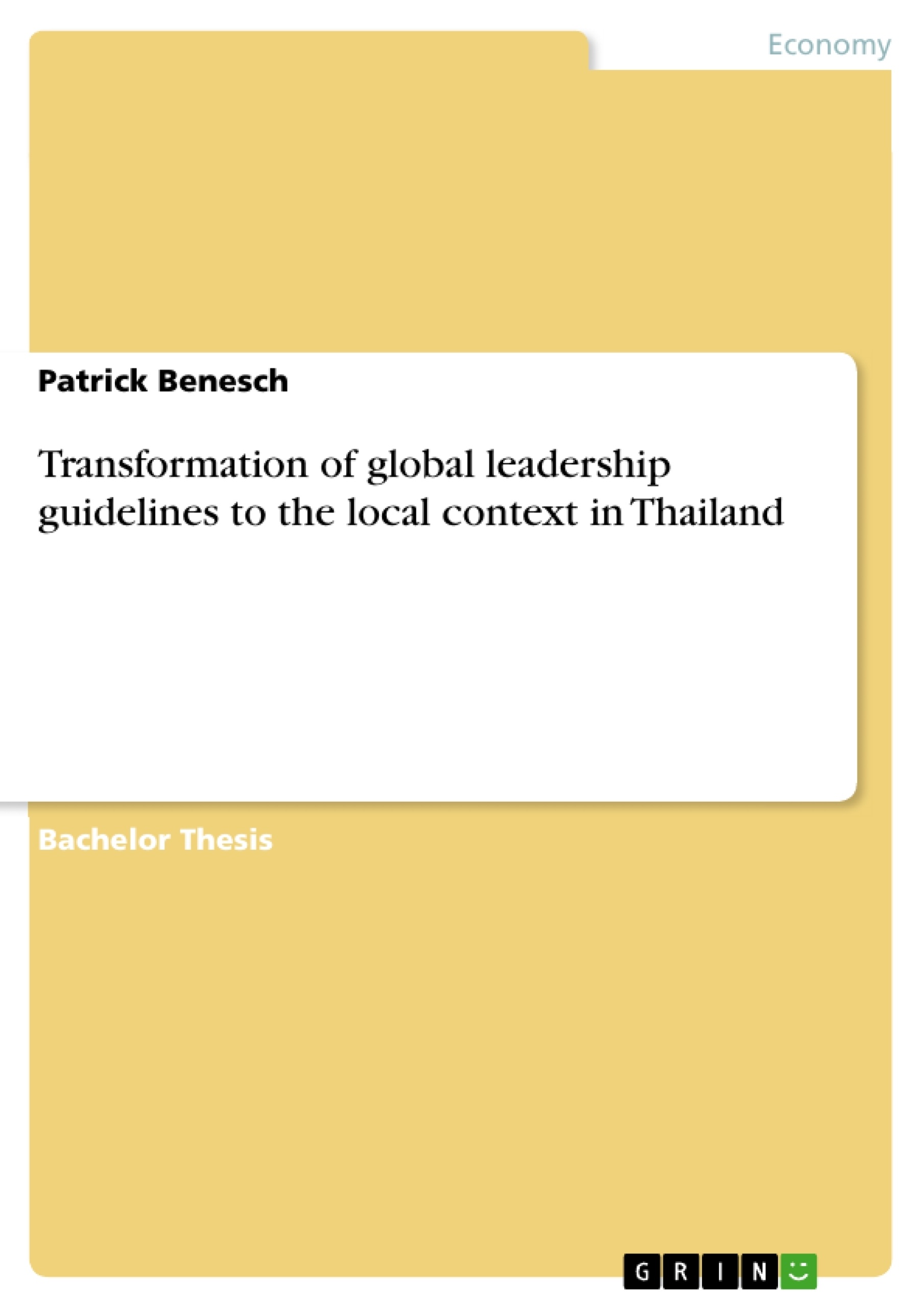Thailand is an important business hub within Southeast Asia. Global corporations that enter the Thai market are confronted by different cultural values, behaviors and expectations. This is especially challenging for leadership as corporate values and behaviors have to be transferred to the local staff. Leadership guidelines are an instrument to align the corporate leadership values to local employees. In order to be relevant in the local context, the global guidelines have to be transformed.
This thesis subsequently aims to answer the question as to how global leadership guidelines can be transformed to the local context in Thailand.
To answer the research question qualitatively, guided expert interviews were conducted with managers in Thailand to identify cultural implications for leadership. The material was then analyzed by content analyses and interpreted by linking it to relevant literature.
The research identified several implications for the content and development of guidelines. As for the content, it became clear that the face saving-value in Thailand requires increased sensitivity for reprimanding subordinates. Leaders are required to take an interest in personal matters of subordinates. Also, they should regularly follow up with them. Furthermore, subordinates prefer guidance on how to reach goals. Another major finding is that leadership guidelines should facilitate a familial and harmonious environment. For motivating employees, it became clear that Thai staff members are motivated by social aspects and the need for esteem whereas self-actualization is less important. Taking this finding into consideration, it is proposed that guidelines for transformation be suggested accordingly. This requires introducing detailed descriptions and to rephrasing certain statements. The implementation process should be designed in a way that allows discussions without superiors being involved in order to facilitate the contribution of employees without being inhibited by hierarchy.
Inhaltsverzeichnis (Table of Contents)
- 1. Introduction
- 1.1. Rationale and research interest.
- 1.2. Research approach.
- 1.3. Structure of the thesis
- 2. Theoretical part...
- 2.1 Leadership guidelines.
- 2.1.1 Content of guidelines...
- 2.1.2 Structure of guidelines...
- 2.1.3 Implementing guidelines
- 2.1.4 Problems of leadership guidelines.......
- 2.2 Leadership......
- 2.2.1 Participative vs. autocratic leadership....
- 2.2.2 Limitations of a cross-cultural perspective
- 2.3 Motivation: Maslow's hierarchy of needs
- 2.4 Culture definition.......
- 2.5. Cultural dimensions by Hofstede..
- 2.5.1 The four dimensions presented by Hofstede.
- 2.5.2 Criticism of the Hofstede study....
- 2.6 GLOBE Study..
- 2.6.1 The nine dimensions presented by GLOBE.
- 2.7 Culture of Thailand...
- 2.7.1 Thailand in the Hofstede study..
- 2.7.2 Thailand in the GLOBE study..
- 2.8 Summary of the theoretical part
- Citar trabajo
- Patrick Benesch (Autor), 2014, Transformation of global leadership guidelines to the local context in Thailand, Múnich, GRIN Verlag, https://www.grin.com/document/281988



